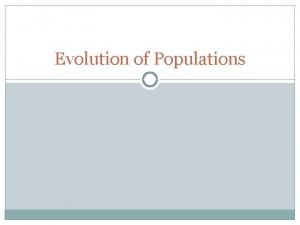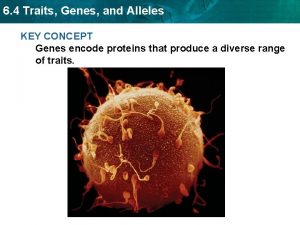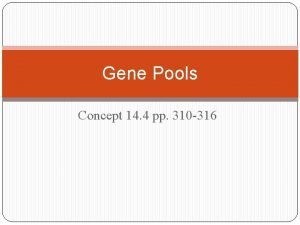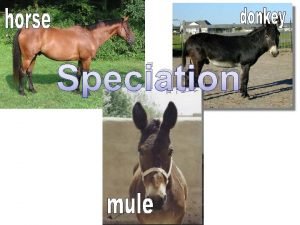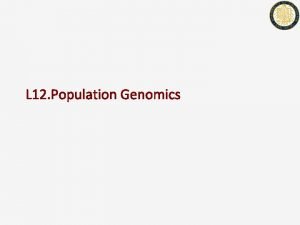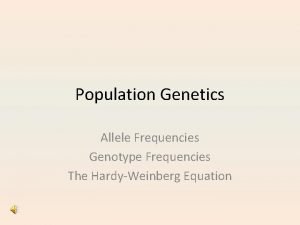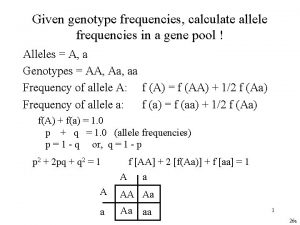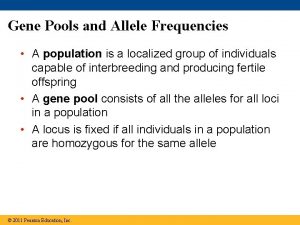I Allele frequencies and gene pool A Gene







- Slides: 7

I. Allele frequencies and gene pool A. Gene Pool: Total genetic information available in population B. Allele frequency is determined by dividing number of certain allele by total number of alleles. 1. P + Q = 1 1. P = number of recessive/total number of alleles 2. Q =number of dominant/total number of alleles C. Use allele frequency to Predict Phenotypes P 2 + 2 PQ + Q 2 = 1

II. Hardy Weinberg Equilibrium A. Allele frequencies in a population remain the same from generation to generation unless acted on by outside influences. B. Assumptions about an ideal “made up” population that is not evolving 1. No net mutations occur; allele frequencies do not change because of mutation. 2. Individuals neither enter nor leave the population. 3. The population is large 4. Individuals mate randomly. 5. Natural Selection does not occur.

III. Disruption of Genetic Equilibrium A. Mutation 1. can produce totally new alleles for a trait 2. most harmful 3. beneficial are important for evolution B. Migration (Gene Flow) 1. Immigration a) Movement of individuals into a population 2. Emigration a) movement of individuals out a population b) Gene flow (1) Process of genes moving from one population to another

C. Genetic Drift 1. Allele frequencies change as a result of random events or chance 2. Small populations a) Founders effect b) Bottle neck D. Non. Random Mating 1. Many species do not mate randomly 2. based on a) geographic proximity b) similar physical characteristic (1) assortative mating

E. Natural Selection 1. Stabilizing selection a) Individuals with average form of trait have highest fitness b) Extreme forms have lower fitness (1) Large – seen (2) Small – not fast 2. Directional selection a) One extreme form has greater fitness then average b) Anteaters longer tongue more effective 3. Disruptive Selection a) Either extreme have greater fitness

F. Sexual Selection 1. Colors 2. Females choose males based on certain traits 3. Extreme traits give female indication of quality of males genes

Summary • • Causes of variation predicting phenotype Hardy Weinberg equilibrium 6 things which disrupt genetic equilibrium
